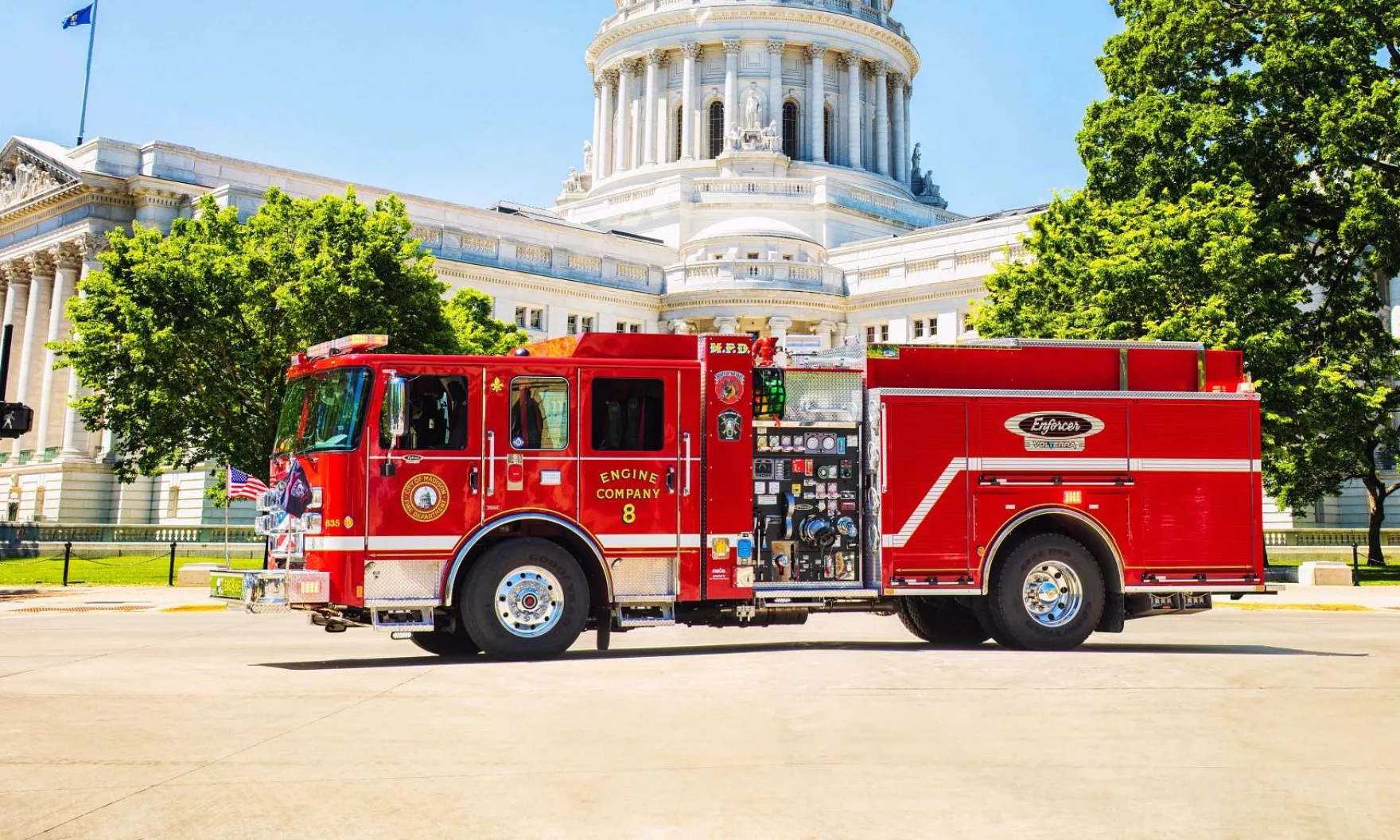Fire trucks are essential tools that firefighters use to fight fires. Not only do they arrive quickly at the scene, but all their fire fighting tools are ready for use as well.
A fire truck can also help victims escape a burning building or vehicle. If they are trapped inside, infrared cameras may be able to bring them out safely.
Type 1
A fire truck, also referred to as a fire lorry or engine, is an off-road vehicle specially equipped for firefighting operations. These vehicles usually feature sirens, emergency vehicle lighting and communication tools such as two-way radios and mobile computer technology.
Today, the most prevalent fire truck type is a Type 1. This model serves as the primary fire apparatus in large metropolitan areas, transporting 400 to 500 gallons of water and equipped with various specialized tools depending on the department’s requirements.
Type 2
Fire trucks are an integral part of emergency services infrastructure. They supply firefighters with water and tools they need to fight a fire quickly and effectively.
They have the capacity to transport a range of equipment and supplies for incident mitigation, technical rescue and more. Their design meets NFPA standards for firefighting and first aid application.
Fire truck types are classified by size and hose requirements, making it simple for fire departments to request the right support during an emergency. Each type of truck also has a function that defines its purpose so that emergency responders know exactly what type of support is available when needed.
Type 3
The Type 3 fire truck is equipped with both a pump and aerial device on one vehicle. These engines are commonly used in urban interface and wildland fire response operations, providing a master stream and access to elevated areas.
The National Fire Protection Association’s Standard 1901, Standards for Automotive Fire Apparatus, categorizes vehicles according to type and function. This helps fire departments locate the apparatus that best meets their needs while managing mutual aid effectively.
Type 4
Fire trucks are specialized vehicles that help rescue people from fire scenes, ventilate buildings or locations and provide emergency first aid. They typically carry equipment like battering rams for forcible entry, flood lights, flashlights, sledgehammers, shears, shovels, saws, winches and pumps among other tools.
These fire engines are primarily designed to combat structural fires and meet NFPA standards. These apparatus have a large water tank as well as an adjustable deluge gun (known as a master stream) that can be directed toward any spot when necessary. Furthermore, they’re capable of bringing other tools onto the scene for assistance.
Type 5
The Type 5 fire truck is a ladder-equipped vehicle with an increased Gross Vehicle Weight Rating (GVWR) than its smaller counterpart, the Type 2. It’s also engineered to be durable and capable of taking on tough terrain.
Fire trucks are an indispensable asset to any fire department and can be employed for a variety of tasks. Some are even equipped with large ladders so firefighters can easily access fires in high-rise buildings.
Fire trucks typically feature gripped steps to help firefighters maneuver around the truck with ease. Furthermore, most come equipped with reference books on firefighting that firefighters can refer to for guidance when unsure what steps to take next.
Type 6
The Type 6 fire truck is a large, pick-up truck-based apparatus with an GVWR of nine to sixteen thousand pounds. This makes it suitable for driving through rugged terrain during wildland fire response operations.
This 150-400 gallon tank vehicle is equipped with 300 feet of 1 1/2” hose, and it is typically designed to respond to unpaved forest lands or rubble from an urban disaster.
HME engineers designed this tough 4×4 chassis with advanced storage solutions and engineering to enhance performance, durability and value. Utilizing 3-D modeling technology, HME created a flex-system to shield the stainless steel body from rough and uneven wildland terrain.
Type 7
Fire departments across America work tirelessly to safeguard our communities and keep us secure. On average, they respond to 350,000 structure fires annually which result in $7.2 billion worth of property damage on an annual basis.
Each fire truck is customized with specific components and features, as well as carrying certain types of gear. This helps the department better meet its demands while improving response times.


